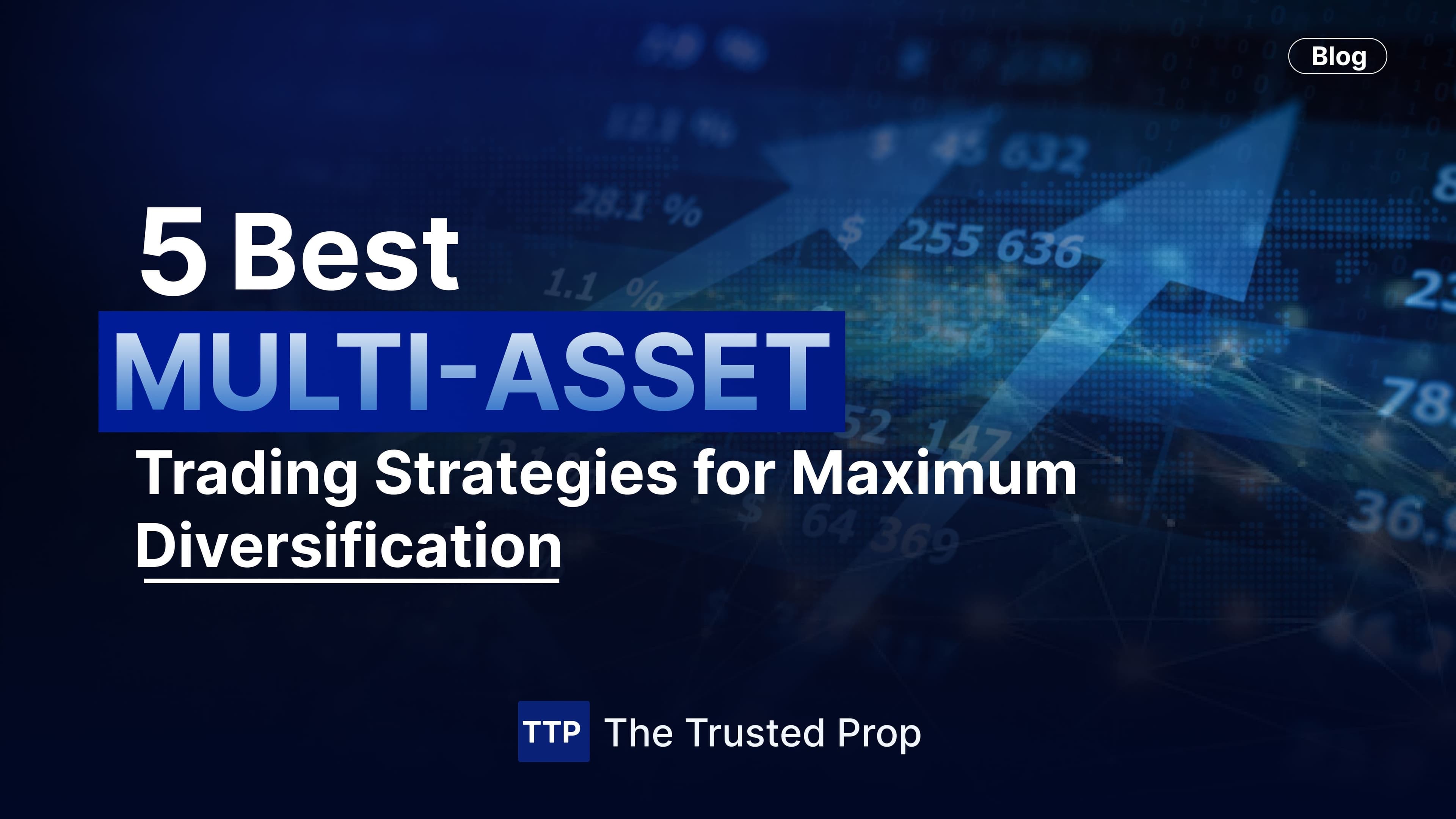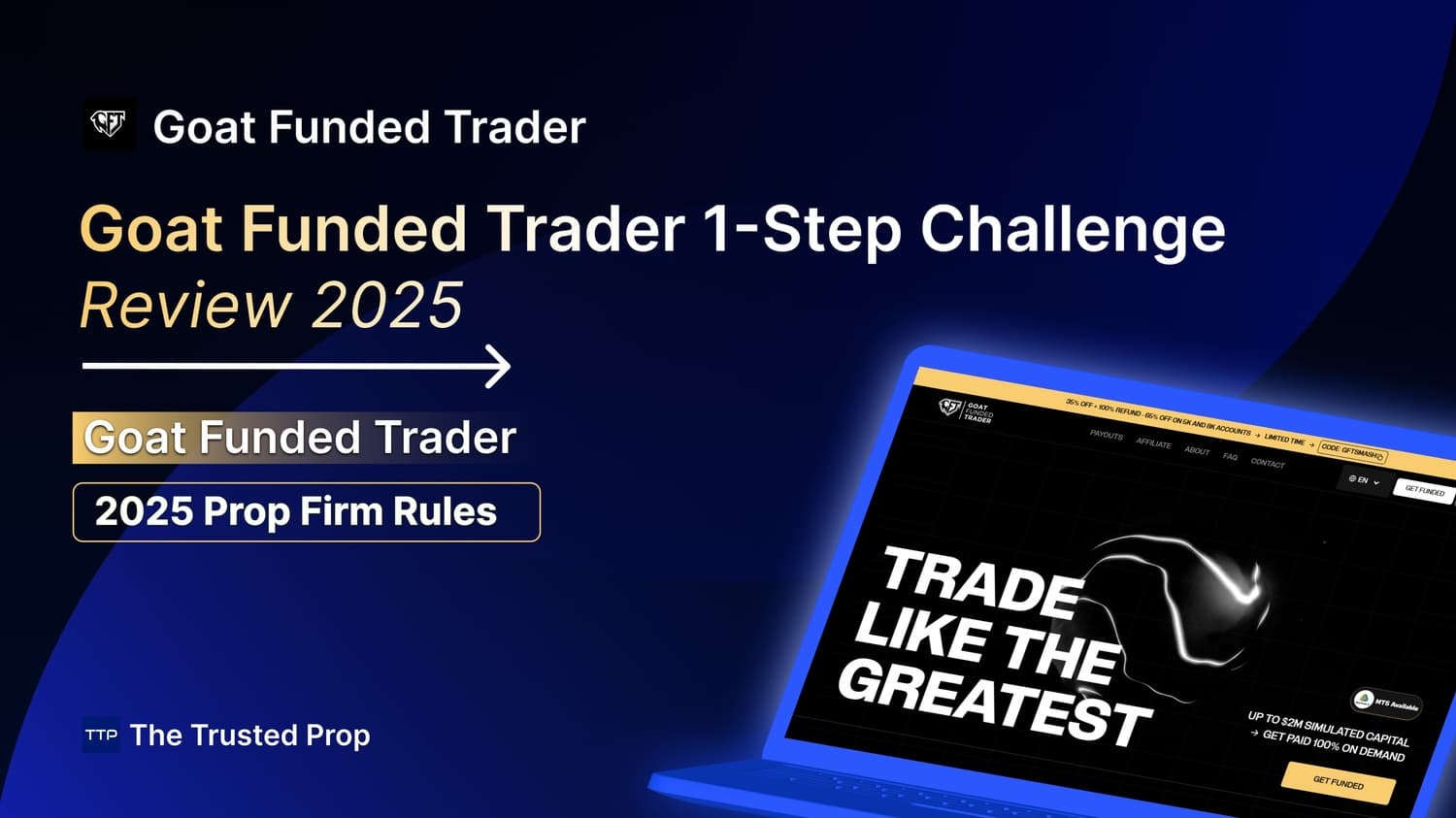5 Best Multi-Asset Trading Strategies for Maximum Diversification

5 Best Multi-Asset Trading Strategies for Maximum Diversification
3/31/2025
No matter how trending it may be, the market is always known for its volatility. “Do not put all your eggs in one basket” has been and still is one of the most important rules for every serious trader and investor. Never trust a single asset because it has very high risks and limits your profit potential. That’s why multi-asset trading strategies have the stage.
Traders can diversify their investments by allocating them to several asset classes, such as stocks, forex, commodities, indices, and cryptocurrencies. This can be a more effective risk management strategy to reduce portfolio volatility and take advantage of favorable situations in multiple markets. In this article, we are going to delimit the five most effective multi-asset trading strategies for optimal diversification and thereby understand and apply them properly.
The famous quote of one of the greatest economists: “Diversification is an established tenet of conservative investment.” — Benjamin Graham.
What Is Multi-Asset Trading?
When we are talking about trading in multi-asset, it means the trading or investing made in many different financial instruments across different markets and sectors. Rather than only trading in particular assets such as Forex or equities, traders have multiple options for investing their capital in a mix of Stocks, Commodities, Forex pairs, bonds, and Cryptocurrencies. The only goal is diversification, which states that one must have more than one source of income to be prepared for past, present, and future contingencies. Diversification of your ownership of the assets results in the steady and efficient management of the risk as well as the return you can expect from your investment. In this sense, if losses are experienced in one sector, income may still be earned in other assets, which prevents a significant negative impact. The multi-asset strategy has proven to be a great solution for both investors and institutional traders due to the very intense and interconnected nature of contemporary financial markets around the world.
Why is Diversification important in Trading
It is best that we know the reasons why diversification is imperative before starting on the strategies. Every market anywhere is interconnected. A stock market crash can send the price of gold, a haven of safety, upwards. Besides, geopolitical tensions are a major determinant that can cause the price of oil to rise, which can lead to the weakness of some currencies. Traders who have diversified their investment into multiple markets can spread risk across different markets besides hedging each stock or sector.
1.Asset Class Rotation Strategy
Asset class rotation among asset classes is one of the most successful strategies in a multi-asset universe. In this strategy, investors change their investments from one asset class to another according to the economic cycle and market conditions.
For example:
- Economically expanding conditions might see investors divert more of their capital to equities and other commodities.
- When economic growth seems unlikely, they might prefer moving toward less risky assets like bonds, gold, or fixed forex pairs.
The main task is to keep track of macroeconomic indicators, for example, interest rates, inflation level, GDP growth, and central bank policies, which are the major factors affecting the market. Asset class rotation is about strategic timing and confident hypotheses about the business cycle.
2. Correlation-Based Trading
Correlation-based trading is a proven strategy in multiasset trading. One more experienced way in multi-asset trading is correlation trading. This means comparing the associations of different resources to come up with the required trading decisions. Some assets go one way with a positive correlation, while others have a negative correlation and go the other way.
For example:
- Traditionally, the U.S. Dollar (USD) and Gold (XAU) had a negative correlation. Oil prices and currencies linked to commodities, such as the Canadian Dollar, usually move in sync with each other.
- A multi-asset trader can take advantage of this information and use this knowledge to hedge their positions.
In a scenario where the risky asset, for example, is the one they are long on, one can be short on gold or a safe-haven currency to offset the risk.
3. Risk Parity Strategy
The Risk Parity Strategy is not about capital allocation; instead, it is the risk that is managed. In a conventional portfolio, traders can easily split 60% into stocks and 40% into bonds. Whereas, despite the smaller size, stocks have a predisposition for harsh volatility. Thus, a slight decrease in stocks can warp the entire portfolio.
- Risk parity is the process of deciding the weight of each asset based on the risk it poses, e.g., a lower weight for higher risk. We can see that more importance is attached to low-risk assets like government bonds.
- The forex, stocks, and cryptocurrencies sectors that are prone to high volatility do not have to be funded with too much money to trade. As a result, a portfolio can have higher diversification without sacrificing returns.
Another course of action could be to lower the capital allocated to such a market. This methodology enforces mirror performance among all the components of the portfolio.
4. Trend Following Across Asset Classes
Trend-following has been around for a very long time and represents one of the most successful methods in trading. This is why this technique is extraordinarily effective in a multi-asset environment. A simple strategy is the key to the above advice. Namely, look for strong trends in various markets, and then, if market signs are strong, stay in the trend.
For example:
- If stock indices are rallying, then traders may bet long.
- Concurrently, they may wish to look out for commodities or forex pairs that are showing bearish trends and then short them.
Trend following's beauty is that there isn't a need to predict the tops or bottoms of the market. Thereupon, instead, traders can make profits from the established trends of the middle of the wave across the asset classes.
5. Event-Driven Multi-Asset Trading
Markets move based on news, events, and economic reports. The event-driven trading in a multi-asset setup implies that a trader should go long/short in different markets to profit from global news events, geopolitical developments, or major economic releases.
- A central bank's policy on interest rates can lead to fluctuations in forex pairs.
- In this case, the gold price might soar along with the oil price if a shock regarding the war ensues.
- The indices of stock transactions usually rise if the rate of unemployment is low; the data on labor market performance is strong, or companies are reporting a downward revision of layoff plans.
Through careful observation of the economic calendar and the reading of the world's main headlines, multi-asset traders undertake profitable investments in the different markets by making use of the volatility that will be present in them, which means that even if there is any single event that might lead them to lose their profits, they are still at a profit.
Some Key Points Before Applying Multi-Asset Strategies
When applying any multi-asset trading strategy, traders should direct their attention to a few crucial aspects.
- First of all, you should analyze your financial instrument profile. This would mean touching upon financial objectives, risk tolerance, and trading experience that one has had to pick the right asset mix among other practices.
- Then, grasp the concepts of multi-asset strategies; diversification occurs only when one has clear insight about the functioning of various markets like stocks, forex, as well as commodities, and their connectivity.
- Furthermore, make sure that you also consider the strategy that will drive the entire process. If the strategy is about following the trend, examine whether it meets both your goals and the acceptable level of risk.
Remember taxation and liquidity: the assets that you trade are subject to different tax rules and have different liquidity conditions, resulting in changes to your trading costs and trade execution ease if you shift the assets.
Conclusion
In the world of trading, never apply any multi-asset trading strategy; traders should not only focus on luxury. By considering and making effective multi-asset trading strategies, traders have to analyze their attention to a few crucial aspects of their own financial instrument profile. For a few seconds, ignore the trade categories of asset rotation, correlation, or event that you like to do. The key is discipline, research, and understanding of market dynamics. Multi-asset trading is not just running behind each financial market move—it’s the pursuit of a well-constructed, steady, and wealth-making trading portfolio in the long term.
You may also like
ATFunded Detailed Review 2025: Challenges, Rules, Payouts & Real Trader Insights

Top One Trader Payout Rules & Profit Split Guide (2025)
.jpeg&w=1920&q=75)
iFunds Account Types, Fees, Rules & Payouts (2025)

Goat Funded Futures Payout Rules & Eligibility Explained (2025)
%20(1).jpeg&w=1920&q=75)
FORFX Prop Firm Detailed Review 2025

Goat Funded Trader 1-Step Challenge Review 2025

Goat Funded Futures 1-Step Challenge Review 2025
.jpeg&w=1920&q=75)
No FAQs are available for this topic yet.